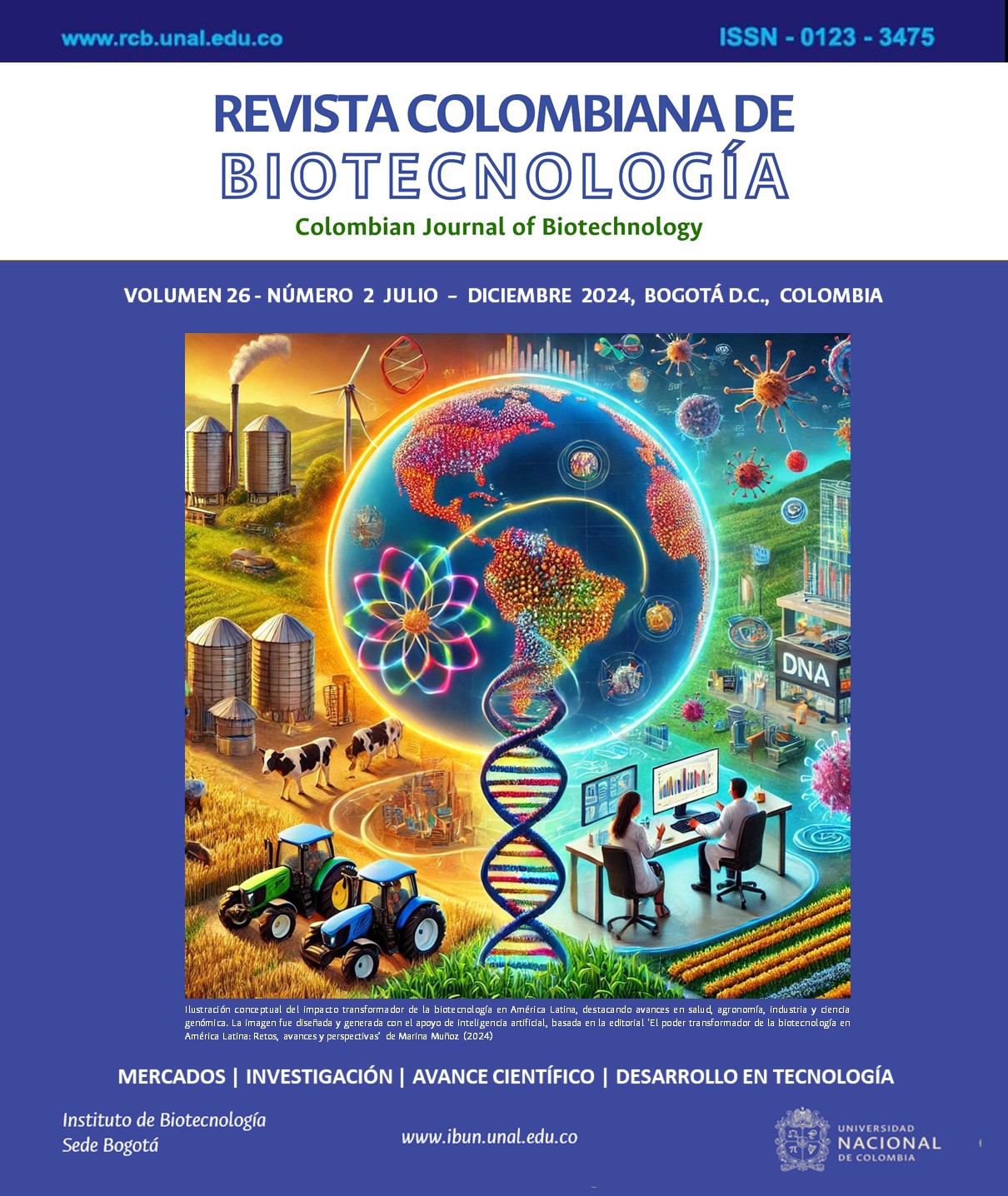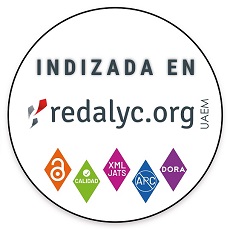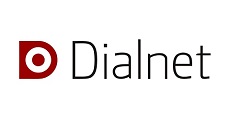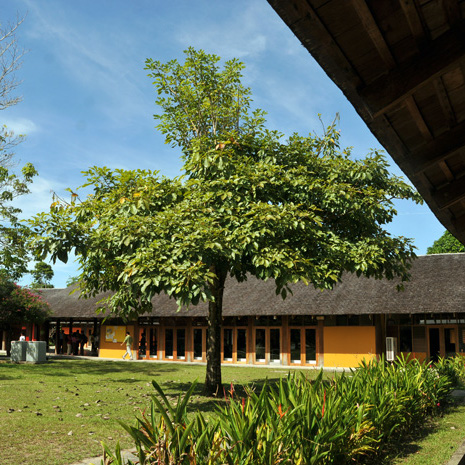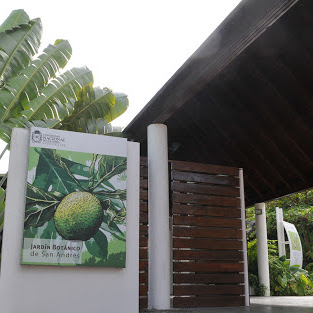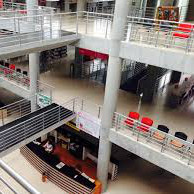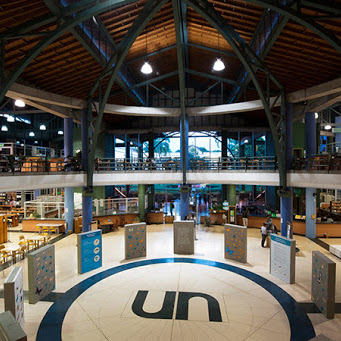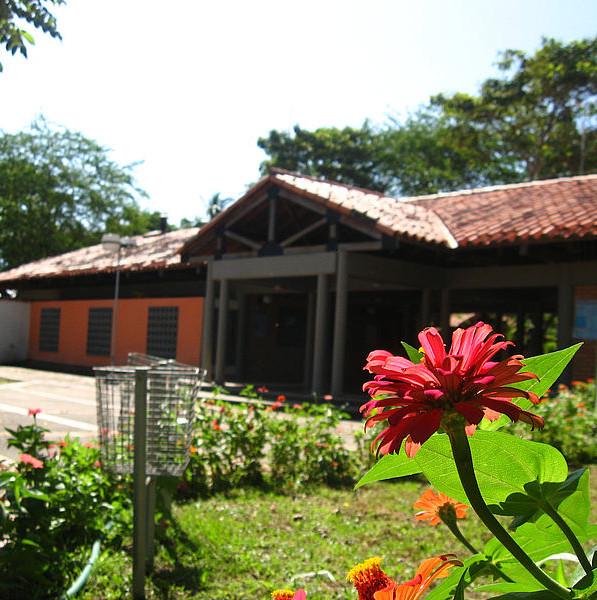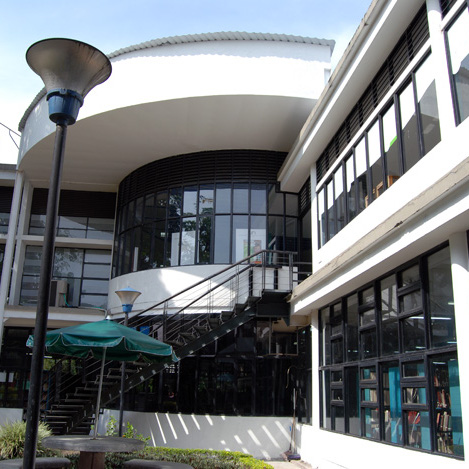Biological activity of biomass, phycocyanin and exopolysaccharides from a native strain of Spirulina subsalsa, grown in low cost saline medium
Actividad biológica de biomasa, ficocianina y exopolisacáridos de una cepa nativa de Spirulina subsalsa, cultivada en un medio salino de bajo costo
DOI:
https://doi.org/10.15446/rev.colomb.biote.v26n2.111349Palabras clave:
Spirulina subsalsa, antimicrobial activity, citotoxicity (en)Spirulina subsalsa, actividad antimicrobial, citotoxicidad (es)
Descargas
To evaluate the biological activity of biomass, phycocyanin extracts, and exopolysaccharides from S. subsalsa, axenic cultures were conducted at 9 ‰ salinity by adding seawater and using a low-cost saline medium: [N]=14 mM. The cultivation was performed in an external environment and was manually stirred. The cyanobacteria were centrifuged when they reached the exponential and stationary growth phases. The filtrate was used to obtain the exopolysaccharides by acetone precipitation, and the biomass was used to obtain the extracts in the different solvents. Phycocyanin was extracted in water. The activity against Escherichia coli, Pseudomonas aeruginosa, Bacillus cereus, Micrococcus luteus and Staphylococcus aureus, using the agar diffusion technique was evaluated. The results showed that only the ethanolic biomass extracts, harvested in stationary phase, had mild to moderate antibacterial activity against Bacillus cereus and Staphylococcus aureus. The antifungal effect of the extracts was also evaluated. The aqueous extracts (exopolysaccharides and phycobiliproteins) and ethanolic, chloroformic and hexane extracts of S. subsalsa, did not inhibit the growth of Rhizopus orizae and Aspergillus niger. The toxicity of the extracts was tested using the crustaceans Artemia franciscana and Daphnia magna. The extracts of exopolysaccharides and biomass were found to be innocuous, but the aqueous extracts of phycocyanin showed significant cytotoxic activity against A. franciscana (LC50 exponential phase= 1.69 μg mL-1; LC50 stationary phase= 2.59 μg mL-1). The results suggest that the native strain of S. subsalsa, cultivated in a seawater enriched medium and in a low-cost saline medium has potential to produce bioactive compounds with antimicrobial properties.
Con el objetivo de evaluar la actividad biológica de la biomasa, extractos de ficocianina y exopolisacáridos de S. subsalsa, se realizaron cultivos axénicos a 9 ‰ de salinidad mediante la adición de agua de mar y en un medio salino de bajo costo: [N]=14 mM. El cultivo se realizó en ambiente externo (agitación manual). Los cultivos fueron centrifugados cuando alcanzaron las fases de crecimiento exponencial y estacionario. El filtrado se utilizó para obtener los exopolisacáridos por precipitación con acetona, y la biomasa se utilizó para obtener los extractos en diferentes solventes. La ficocianina se extrajo en agua. Se evaluó la actividad frente a Escherichia coli, Pseudomonas aeruginosa, Bacillus cereus, Micrococcus luteus y Staphylococcus aureus, mediante la técnica de difusión en agar. Los resultados mostraron que sólo los extractos etanólicos de biomasa, cosechados en fase estacionaria, tuvieron actividad antibacteriana leve a moderada contra Bacillus cereus y Staphylococcus aureus. También se evaluó el efecto antifúngico de los extractos. Los extractos acuosos (exopolisacáridos y ficobiliproteínas) y los extractos etanólico, clorofórmico y hexánico de S. subsalsa, no inhibieron el crecimiento de Rhizopus orizae y Aspergillus niger. La toxicidad de los extractos se probó utilizando los crustáceos Artemia franciscana y Daphnia magna. Los extractos de exopolisacáridos y biomasa resultaron ser inocuos, pero los extractos acuosos de ficocianina mostraron actividad citotóxica significativa contra A. franciscana (CL50 fase exponencial = 1,69 μg mL-1; CL50 fase estacionaria = 2,59 μg mL-1). Los resultados sugieren que la cepa nativa S. subsalsa, cultivada en medio enriquecido con agua de mar y en un medio salino de bajo costo tiene potencial para producir compuestos bioactivos con propiedades antimicrobianas.
Referencias
Abdel-Moneim, A., El-Saadony, M., Shehata, A., Saad, A., Aldhumri, S., Ouda, S., Mesalam, N. (2022). Antioxidant and antimicrobial activities of Spirulina platensis extracts and biogenic selenium nanoparticles against selected pathogenic bacteria and fungi. Saudi Journal of Biological Sciences, 29(2), 1197-1209. DOI: https://doi.org/10.1016/j.sjbs.2021.09.046
Ansari, M., Anurag, A., Fatima, Z., Hameed, S. (2013). Natural Phenolic Compounds: A Potential Antifungal Agent. FORMATEX, 1189-1195.
Battah, M., Ibrahim, H., El-Naggar, M., Abdel, F., Amer, M. (2014). Antifungal Agent from Spirulina maxima: Extraction and Characterization. Global J. of Pharmacol., 8, 228-236.
Bauer, A., Kirby, W., Sherris, I., Turk, M. (1966). Antibiotic susceptibility testing by standarized single disk method. Am. J. Clin. Pathol., 45, 493-496. DOI: https://doi.org/10.1093/ajcp/45.4_ts.493
Campanella, L., Cubadda, F., Sammartino, D., Saoncella, A. (2001). An algal biosensor for the monitoring of water toxicity in estuarine environments Water Research, 35, 69-76. DOI: https://doi.org/10.1016/S0043-1354(00)00223-2
Chakraborty, M., Jayaswal, R., Panka, P. (2014). Evaluation of Antibacterial Activity of Spirulina platensis Extracts against Opportunistic Pathogen. Int. J. of Pharmacognosy and Phytochem. Research, 6, 988-990.
Challouf, R., Trabelsi, L., Dhieb, R., Abed, O., Yahia, A., Ghozzi, K., Ammer, J., Omran, H., Ouada, H. (2011). Evaluation of cytotoxicity and biological activities in extracellular polysaccharides released by cyanobacterium Arthrospira platensis. Braz. Arch. Biol. Techno., 54, 831-838. DOI: https://doi.org/10.1590/S1516-89132011000400024
Crotti, L., Jabopr, V., Chellegatti, M., Fonseca, M., Said, S. (1999). Studies of pectic enzymes produced by Talaromyces flavus in submerged and solid substrate cultures. J. Basic Microbiol., 39, 227-35. DOI: https://doi.org/10.1002/(SICI)1521-4028(199909)39:4<227::AID-JOBM227>3.3.CO;2-#
El-Sheekh, M., Osman, M., Dyab, M., Amer, M. (2006). Production and characterization of antimicrobial active substance from the cyanobacterium Nostoc muscorum. Environ. Toxicol. Pharmacol., 21, 42-50.
El-Sheekh, M., Osman, M., Dyab, M., Amer, M. (2006). Production and characterization of antimicrobial active substance from the cyanobacterium Nostoc muscorum. Environ. Toxicol. Pharmacol., 21, 42-50. DOI: https://doi.org/10.1016/j.etap.2005.06.006
Faucher, O., Coupal, B., Leduy, A. (1979). Utilization of seawater and urea as a culture medium for Spirulina maxima. Can. Jour. of Microbiol., 25, 752. DOI: https://doi.org/10.1139/m79-109
Fonseca, M., Said, S. (1995). Sequential production of pectinases by Penicillium frequentans. World J. Microbial. Biotecnol., 11, 174-177. DOI: https://doi.org/10.1007/BF00704643
García-Ishimine, R., Ródríguez-Vega, J., Mejía-Pineo, D. (2020). Efecto hepatoprotector, antioxidante y anticancerígeno de la espirulina. Ciencias básicas biomédicas, 19(6), e2960.
Issa, A., Adam, M., Fawzy, M. (2013). Alterations in some metabolic activities of Scenedesmus quadricauda and Merismopedia glauca in response to glyphosate herbicide. J. Biol. Earth Sci., 3, B17-B28.
Jiang, L., Pei, H., Hu, W., Ji, Y., Han, L., Ma, G. (2015). The feasibility of using complex wastewater from a monosodium glutamate factory to cultivate Spirulina subsalsa and accumulate biochemical composition. Bioresour. Technol, 180, 304-310. DOI: https://doi.org/10.1016/j.biortech.2015.01.019
Johnston, R., Siegfried, E., Snell, T., Carberry, J., Carberry, M., Brown, C., Farooq, S. (2018). Effects of astaxanthin on Brachionus manjavacas (Rotifera) population growth. Aquacult. Res., 49, 2278-2287. DOI: https://doi.org/10.1111/are.13688
Kaushik, P., Chauhan, A. (2008). In vitro antibacterial activity of laboratory grown culture of Spirulina platensis. Indian J. of Medical Microbiol., 48, 348-352. DOI: https://doi.org/10.1007/s12088-008-0043-0
Khairy, H., El-Kassas, H. (2010). Active substance from some blue green algal species used as antimicrobial agents. Afr. J. Biotechnol., 9, 2789-2800.
Lennuk, L., Kotta, J., Taits, K., Teeveer, K. (2015). The short-term effects of crude oil on the survival of different size-classes of cladoceran Daphnia magna. Oceanologia, 57, 71-77. DOI: https://doi.org/10.1016/j.oceano.2014.10.003
Ma, L., Led, J. (2000). Determination by high field NMR spectroscopy of the longitudinal electron relaxation rate in Cu(II) plastocyanin from Anabaena variabilis. J. Am. Chem. Soc., 122: 7823-7824. DOI: https://doi.org/10.1021/ja000746x
Madubunyi, I. (1995). Antimicrobial activities of the constituents of Garcinia kola seeds. Intern. J. of Pharm., 33, 232-237. DOI: https://doi.org/10.3109/13880209509065369
Mazur-Marzec, H., Błaszczyk, A., Felczykowska, A., Hohlfeld, N., Kobos, J., Toruńska-Sitarz, A., Devi, P., Montalvão, P., D’souza, L., Tammela, P., Mikosik, A., Bloch, S., Nejman-Faleńczyk, B., Węgrzyn, G. (2015). Baltic cyanobacteria – a source of biologically active compounds. European J. of Phycol., 50, 343-360. DOI: https://doi.org/10.1080/09670262.2015.1062563
Meyer, B., Ferrigni, N., Putnam, J., Jacobsen, L., Nichols, D., McLaighlin, J. (1982). Brine Shrimp: A convenient general bioassay for active plant constituents. J. Medic. Plant. Res., 45, 31-34. DOI: https://doi.org/10.1055/s-2007-971236
Monks, N., Lerner, C., Henriques, A., Farias, F., Schapoval, E., Suyenaga, E., Da Rocha, A., Schwartsmann, G., Mothes, B. (2002). Anticancer, antichemotactic and antimicrobial activities of marine sponges collected off the coast of Santa Catarina, southern Brazil. J. Exp. Mar. Biol. Ecol., 281, 1-12. DOI: https://doi.org/10.1016/S0022-0981(02)00380-5
Moraes, M., Prietto, L., Ribeiro, A., Denardi, T., Badiale, E. (2011). Assessment of the antifungal activity of Spirulina platensis phenolic extract against Aspergillus flavus. Ciênc. Agrotec. Lavras., 35, 1050-1058. DOI: https://doi.org/10.1590/S1413-70542011000600003
Morton, S., Bomber, J. (1994). Maximizing okadic acid content from Prorocentrum hoffmannianum Faust. J. of Appl. Phycol., 6, 41-44. DOI: https://doi.org/10.1007/BF02185903
Murugan, T., Rajesh, R. (2014). Cultivation of two species of Spirulina (Spirulina platensis and Spirulina platensis var lonar) on sea water medium and extraction of C-phycocyanin. Euro. J. Exp. Bio., 4, 93-97.
Najdenski, H., Gigova, L., Iliev, I., Pilarski, P., Lukavsky, J., Tsvetkova, I., Ninova, M., Kussovski, V. (2013). Antibacterial and antifungal activities of selected microalgae and cyanobacteria. Inter. J. of Food Sci. Technol., 48, 1533-1540. DOI: https://doi.org/10.1111/ijfs.12122
Nowruzi, B., Haghighat, S., Fahimi, H., Mohammadi, E. (2018). Nostoc cyanobacteria species: a new and rich source of novel bioactive compounds with pharmaceutical potential. J. Pharm. Health Services Res., 9, 5-12. DOI: https://doi.org/10.1111/jphs.12202
Ozdemir, G., Karabay, N., Dalay, M., Pazarbasi, B. (2004). Antibacterial activity of volatile component and various extracts of S. platensis. Phytother Res., 18, 754-757. DOI: https://doi.org/10.1002/ptr.1541
Parisi, A., Younes, S., Reinehr, C., Colla, L. (2009). Assessment of the antibacterial activity of microalgae Spirulina platensis. Rev. de Ciências Farmacêuticas Básica e Aplicada, 30, 97-301.
Patterson, G., Baldwin, C., Bolis, C., Caplan, F., Karuso, H., Larsen, L., Levine, I., Moore, R., Nelson, C., Tschappat, K., Tuang, G., Furusawa, E., Furusawa, S., Norton, T., Rayboume, R. (1991). Antineoplastic activity of cultured blue green algae (Cyanophyta). J. of Phycol., 27, 530-536. DOI: https://doi.org/10.1111/j.0022-3646.1991.00530.x
Peeler, T., Stepenson, M., Einspahr, K., Thompson, G. (1989). Lipid Chracterization of an enriched plasma membrane fraction of Dunaliella salina grown in media of varying salinity. Plant Physiology, 89, 970-976. DOI: https://doi.org/10.1104/pp.89.3.970
Prashantkumar, P., Angadi, S., Vidyasagar, G. (2006). Antimicrobial activity of blue-green and green algae. Indian J. Pharm. Sci., 68, 647-648. DOI: https://doi.org/10.4103/0250-474X.29638
Ramamurthy, V., Raveendran, S. (2009). Antibacterial and antifungal activity of Spirulina platensis and Lyngbya majuscula. J. Ecobiol., 24, 47-52.
Rania, M., Abedin, A., Taha, H. (2008). Antibacterial and antifungal activity of cyanobacteria and green microalgae. evaluation of medium components by placket-burman design for antimicrobial activity of Spirulina platensis. Global J. of Biotechnol. & Biochem., 3, 22-31.
Rodríguez, J., Esclapés, M. (1995). Protocolos estándares para bioensayos de toxicidad con especies acuáticas. Versión 1,0. Gerencia general de tecnología. Departamento de Ecología y Ambiente. INTEVEP. 109 pp.
Romero, L., Acosta, M., Mago, R. (2019). Chemical analysis of the biomass of a native strain of Spirulina subsalsa Oersted ex Gomont 1892 (Spirulinaceae) cultivated in low-cost saline medium. African Journal of Microbiology Research, 13(26), 438-445. DOI: https://doi.org/10.5897/AJMR2019.9150
Romero, L., Guevara, M., Gómez, B., Arredondo-Vega, B., Cortez, R., Licet, B. (2017). Producción de pigmentos procedentes de Arthrospira maxima cultivada en fotobiorreactores. Revista Colombiana de Biotecnología, 19(1), 108-114. DOI: https://doi.org/10.15446/rev.colomb.biote.v19n1.59671
Roopchand, D., Krueger, C., Moskal, K., Fridlender, B., Lila, M., Raskin, I. (2013). Food -compatible method for the efficient extraction and stabilization of cranberry pomace polyphenols. Food Chemistry, 141, 3664-3669. DOI: https://doi.org/10.1016/j.foodchem.2013.06.050
Sarada, D., Kumar, C., Rengasamy, R. (2011). Purified C-phycocyanin from Spirulina platensis (Nordstedt) Geitler: a novel and potent agent against drug resistant bacteria. World J. of Microbiol. and Biotech., 27, 779–783. DOI: https://doi.org/10.1007/s11274-010-0516-2
Schaeffer, D., Krylov, V. (2000). Anti-HIV activity of extracts and compounds from algae and cyanobacteria. Ecotoxicol. Environ. Saf., 45: 208-227. DOI: https://doi.org/10.1006/eesa.1999.1862
Seyidoglu, N., Galip, N., Budak, F., Uzabaci, E. (2017). Los efectos de Spirulina platensis (Arthrospira platensis) y Saccharomyces cerevisiae sobre la distribución y producción de citocinas de linfocitos T CD4 + y CD8 + en conejos. Revista austral de ciencias veterinarias, 49(3), 185-190. DOI: https://doi.org/10.4067/S0719-81322017000300185
Sharma, G., Kumar, M., Irfan, M., Dut, N. (2014). Effect of carbon content, salinity and pH on Spirulina platensis for phycocyanin, allophycocyanin and phycoerythrin accumulation. J. Microb. Biochem. Technol., 6, 202-206. DOI: https://doi.org/10.4172/1948-5948.1000144
Shrivastav, A., Mishra, S., Mishra, S. (2010). Polyhydroxyalkanoate (PHA) synthesis by Spirulina subsalsa from Gujarat coast of India. Int. J. of Biol. Macromolecular, 46, 255-260. DOI: https://doi.org/10.1016/j.ijbiomac.2010.01.001
Sorgeloos, P., Lavens, P., Léger, Ph., Tackaert. W., Versichele, D. (1986). Manual for the culture and use of brine shrimp Artemia in aquaculture. Artemia Reference Centre, State University of Ghent, Belgium.
Stephan, C. (1977). Methods for calculating in LC50. En: American Society for Testing and Material (ASTM) Acuatic Toxicology and Hazard Evaluation. Ed. F.L. Mayer y J. Hamelink. Pennsylvania, U.S.A. 65-84. DOI: https://doi.org/10.1520/STP32389S
Szubert, K., Wiglusz, M., Mazur-Marzec, H. (2018). Bioactive metabolites produced by Spirulina subsalsa from the Baltic Sea. Oceanologia, 60, 245-255. DOI: https://doi.org/10.1016/j.oceano.2017.11.003
Thillairajasekar, K., Duraipandiyan, V., Perumal, P., Ignacimuthu, S. (2004). Antimicrobial activity of Trichodesmium erythraeum (Ehr) (microalga) from South East coast of Tamil Nadu, India. Int. J. Integr. Biol., 5, 167-170.
Usharani, G., Srinivasan, G., Sivasakthi, S., Saranraj, P. (2015). Antimicrobial activity of Spirulina platensis solvent extracts against pathogenic bacteria and fungi. Advances in Biological Research., 9, 292-298.
Vicente, V., Ríos, E., Calderón, G., Cañizales, R., Olvera, R. (2004). Detection, isolation, and characterization of exopolysaccharide produced by a strain of Phormidum 94 a isolated from an arid zone of Mexico. Biotechnol. and Bioeng., 85, 306-310. DOI: https://doi.org/10.1002/bit.10912
Villalobos, M., Hernández, W. (2019). Spirulina para prevenir deficiencia de hierro: estudio de aceptabilidad en prescolares y escolares, San José, 2017. Revista Hispana de Ciencias de la Salud, 5(1), 17-24.
Wang, L., Tian, L., Deng, X., Zhang, M., Sun, S., Zhang, W., Zhao, L. (2014). Photosensitizers from Spirulina for Solar Cell. J. of Chemistry, 1-5. DOI: https://doi.org/10.1155/2014/430806
Cómo citar
APA
ACM
ACS
ABNT
Chicago
Harvard
IEEE
MLA
Turabian
Vancouver
Descargar cita
Licencia

Esta obra está bajo una licencia internacional Creative Commons Atribución 4.0.
Esta es una revista de acceso abierto distribuida bajo los términos de la Licencia Creative Commons Atribución 4.0 Internacional (CC BY). Se permite el uso, distribución o reproducción en otros medios, siempre que se citen el autor(es) original y la revista, de conformidad con la práctica académica aceptada. El uso, distribución o reproducción está permitido desde que cumpla con estos términos.
Todo artículo sometido a la Revista debe estar acompañado de la carta de originalidad. DESCARGAR AQUI (español) (inglés).



